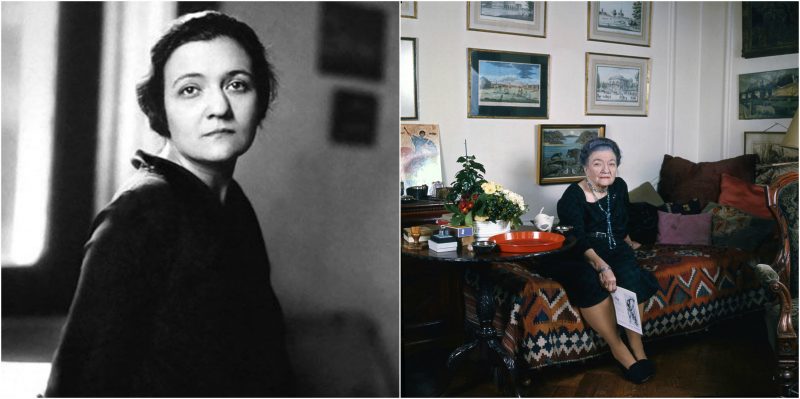Maria (Moura) Ignatievna Budberg was a real femme fatale in her time. She was born in 1891 in Poltava (Ukraine). Her father, Ignaty Platonovitch Zakrevsky, was a famous Russian nobleman and diplomat, as well as a high-ranking lawyer for the Tsar.
In her youth, Moura had the opportunity to get acquainted with the highly sophisticated political and cultural elite of the time. This proved to be helpful later in her adventurous and exciting adulthood. The Baroness lead quite an interesting life, full of love affairs, secrets, and mysteries. It’s safe to say that nobody knew her completely, not even her children.
As a young girl (in 1911), Moura married Djon von Benckendorff, an Estonian aristocrat. Soon afterward, the October revolution began. Benckendorff was forced to flee back to his estate in Estonia (a country controlled by Germany at the time) and leave Moura alone in St Petersburg. In 1918, he was found dead in his mansion under some rather strange circumstances; allegedly he was shot by a local peasant.
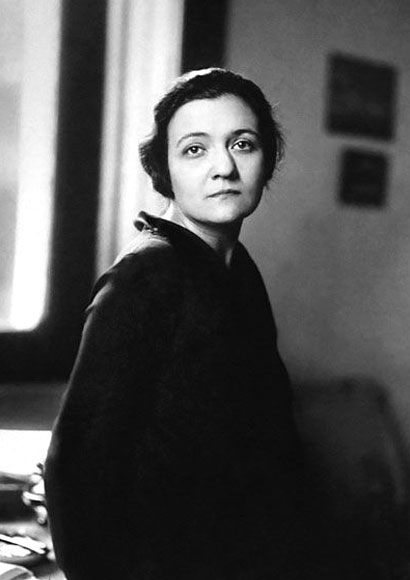
Moura was quite comfortable in St. Petersburg. She worked as a translator in the propaganda office of the British Embassy, a position that kept her in close contact with many influential people, including agents of the British Intelligence Service. Here she met Robert Bruce Lockhart, a British diplomat and a secret agent who would introduce her to the world of espionage. Her affair with Lockhart would turn out to be more than intimate; it also was political. As Lockhart began to realize that Trotsky and Lenin were onto him, he started plotting against them and ultimately was arrested for what is known today as the “Lockhart conspiracy” – a plan to assassinate the Bolshevik leader Vladimir Lenin and destabilize the country.
Moura, willingly or not, was also involved in this conspiracy, and she was also arrested on suspicion of spying for the United Kingdom. After a game of high-level diplomacy, both she and her lover were released. Moura was free, but under one condition: she was asked to cooperate with the Russian intelligence service (the Cheka) should the need arise.
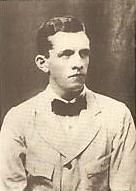
Following this incident, the life of the Baroness was quiet for awhile. She was given a publishing job for World Literature and soon she met Maxim Gorky, the famous Russian social-realism writer. Gorky fell in love with her immediately, and he would become her next adventure. After some time spent together, they got married. Moura moved to his house and served as his wife and personal secretary. During this period (1920), she met another celebrity – H. G. Wells. Her marriage with Gorky ended in 1933, and then Moura married another Estonian, Baron Nikolai Budberg. This affair was short lived, and she obviously married him just for the title and the Estonian citizenship.
The Baroness was determined to escape Russia, and her latest marriage helped her with that plan. In 1933, she emigrated to London, where she got reacquainted with H. G. Wells. It seems like men couldn’t resist her charms and company. Wells became her next lover, a relationship that lasted until his death, although Moura never agreed to marry him.
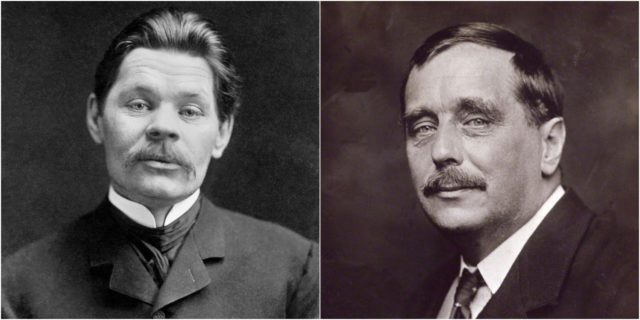
After arriving in London, Moura lead a relatively quiet life, but nevertheless was constantly under surveillance by the MI5. She returned to Russia only twice more in her life: in 1936 for Gorky’s funeral, and once again in 1950. These trips made the British Intelligence services suspicious again, and they believed her to be working for the Russians. She was widely suspected to be a double agent, working for both the Russians and the British at the same time.
During the 1950s, Moura Budberg frequently organized social gatherings which attracted a lot of prominent writers, directors, and philosophers. Some people that were among her regular guests included Laurence Olivier, Bertrand Russell, Guy Burgess, Graham Greene, David Lean, and many others.
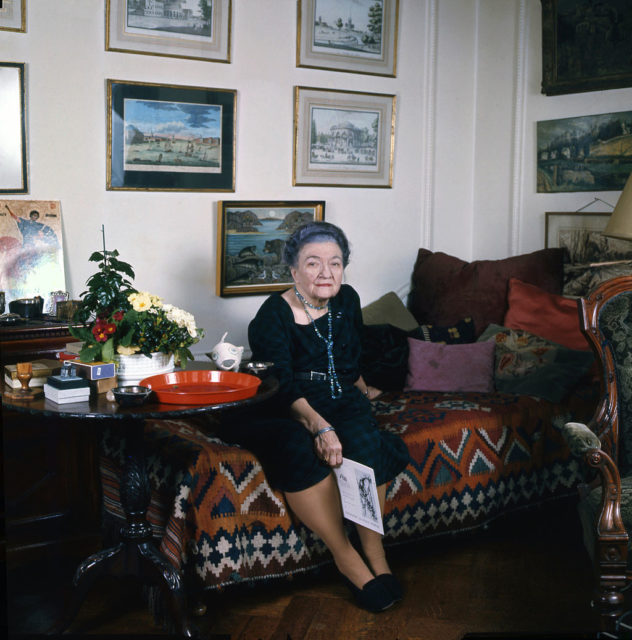
Besides being a double spy and a leading a tumultuos romantic life, it turns out that Moura was also a prolific writer. She is credited as the script writer for at least two movies: Three Sisters directed by Laurence Olivier and John Sichel (1970), and The Sea Gull directed by Sidney Lumet (1968).
Although many people tried to convince her to write an autobiography, she never did it, and before her death in 1974 most of her personal documents were burned. Many details about her life are still shrouded in mystery. The only accounts about Maura’s life are those of her friends and lovers, together with the files that the Intelligence services kept on her. In a way, Maura wanted her life to be fictionalized as much as possible, and she managed to make that happen. Today, there are many books describing her life, in which a lot of the events are made up by the authors.
